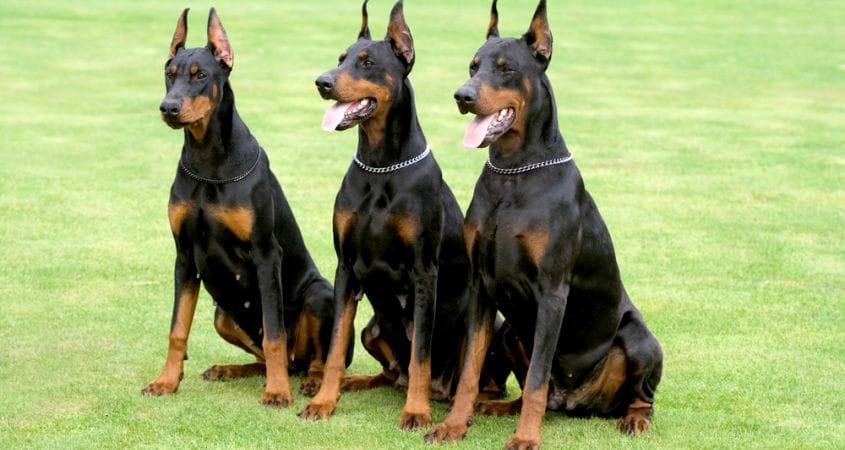When it comes to personal protection, having a well-trained and reliable canine companion is essential. Personal protection dogs are highly trained animals that play a crucial role in ensuring the safety and security of individuals and their families. Behind every exceptional personal protection dog is a skilled breeder who understands the importance of selecting the right breeding stock, implementing effective training methods, and nurturing the innate qualities necessary for a successful protection dog. In this article, we will delve into the vital role breeders play in producing quality personal protection dogs, exploring their selection process, training techniques, and commitment to upholding the highest standards.
The Art of Selecting the Right Breeding Stock
The foundation of producing quality personal protection dogs lies in the careful selection of breeding stock. Skilled breeders understand the significance of choosing dogs with the appropriate temperament, intelligence, and physical attributes necessary for successful protection work. These breeders meticulously assess potential breeding candidates, taking into consideration their lineage, health records, and behavior traits. By selecting dogs with proven working lines and solid temperaments, breeders increase the likelihood of producing offspring with the desired qualities.
In addition to evaluating individual dogs, breeders also consider the compatibility between potential mating pairs. They carefully analyze the strengths and weaknesses of each dog and strive to produce litters that possess a well-rounded combination of traits. This selective breeding process helps ensure that the offspring have the potential to excel as personal protection dogs.
Early Socialization and Environmental Exposure
Once the breeding process is complete, responsible breeders focus on early socialization and environmental exposure to shape the development of personal protection dogs. Puppies are introduced to various stimuli from a young age, including different sounds, surfaces, objects, and people. This exposure helps them become well-adjusted and confident dogs, capable of handling new situations and environments with ease.
Breeders facilitate positive interactions with humans, ensuring that the puppies are well-socialized and comfortable around people. They expose the puppies to different age groups, genders, and ethnicities, helping them develop a balanced temperament and an understanding of appropriate behavior. Early socialization lays the foundation for the dogs’ future training and their ability to interact with their handlers, family members, and strangers.
Specialized Training Methods
Breeders play a critical role in initiating the early stages of training for personal protection dogs. While formal training typically occurs after the puppies are placed with their new owners or handlers, breeders introduce basic obedience commands and establish a foundation for future training.
Responsible breeders prioritize positive reinforcement methods, utilizing rewards, praise, and play to encourage desired behaviors. They focus on building the dog’s confidence, teaching them to respond reliably to commands and cues. Total K9 say that this early training sets the stage for more advanced protection work and lays the groundwork for the dog’s future development as a personal protection companion.
Collaboration with Professional Trainers for Personal Protection Dogs
To ensure the highest level of training and development, breeders often collaborate with professional trainers who specialize in personal protection dog training. These trainers possess the expertise and experience necessary to refine the dogs’ skills and ensure their readiness for real-life protection scenarios.
The collaboration between breeders and trainers is a symbiotic relationship aimed at producing exceptional personal protection dogs. Trainers work closely with the dogs, building upon the foundation established by the breeder. They introduce advanced obedience commands, scent detection, controlled aggression, and situational awareness training. Through a combination of structured exercises and simulated scenarios, trainers prepare the dogs to assess and respond appropriately to potential threats.
Ongoing Support and Commitment
Responsible breeders understand that their role extends beyond the initial breeding and training process. They maintain a commitment to supporting the new owners or handlers of their personal protection dogs. Breeders offer guidance, advice, and resources to ensure the ongoing success and well-being of the dogs in their new homes.
Additionally, reputable breeders maintain open lines of communication with owners, providing a platform for sharing experiences, addressing concerns, and offering further training recommendations. This ongoing support helps ensure that the personal protection dogs continue to thrive in their roles and provide the desired level of safety and security for their owners and families.
Conclusion
The role of breeders in producing quality personal protection dogs cannot be overstated. Through careful selection of breeding stock, early socialization, and collaboration with professional trainers, breeders lay the foundation for the development of exceptional personal protection dogs. Their dedication to upholding high standards and ongoing support ensures that these dogs possess the necessary temperament, intelligence, and training to excel in their vital role of safeguarding individuals and their families. When seeking a personal protection dog, it is essential to recognize and appreciate the valuable contribution that responsible breeders make in producing these remarkable canine companions.



